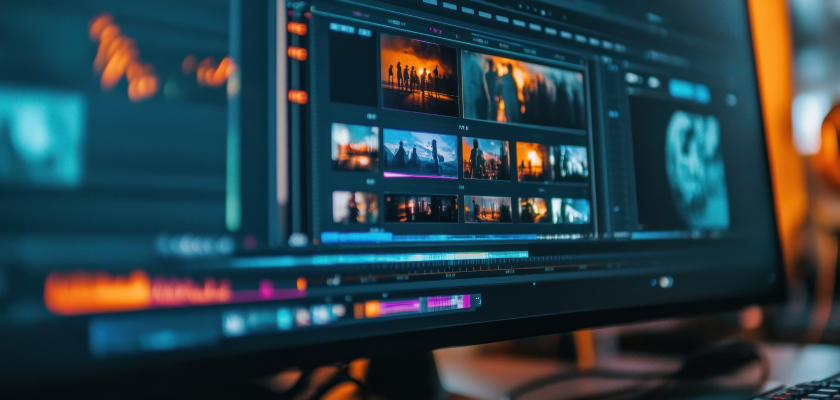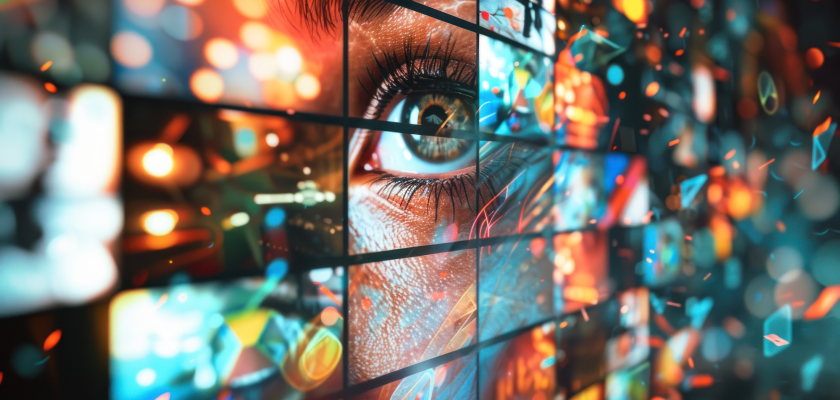While some corners of the internet are busy debating whether or not AI-generated video is a good idea, the train has left the station. AI-generated video ads have arrived.
Brands as diverse as BMW, Starbucks, Coca-Cola, the Calm app, and JP Morgan Chase are using AI content in their ads, along with many more small and large companies. Meta is even offering advertisers tools for simple, AI-generated ad videos on its platforms.
However, attitudes to AI video are still mixed. The furor over a Toys “R” Us TV spot this past June, which was criticized both for being soulless and unimaginative, and for inconsistent characterization and sloppy backgrounds, shows how wrong AI ads can be.
Brands are still nervous about using AI from start to finish, and understandably so. On their own, GenAI models aren’t yet capable of producing externally-ready assets, but virtually everyone agrees that they add superpowers to human creativity when it comes to prototyping, storyboarding, and editing. Using AI for pre-production ideation and post-production refining, instead of throughout the entire process, can make all the difference.
There are some awesome AI ads out there, which demonstrate how to do it right. Nike is always a source of great examples in the marketing space, and the company’s 2022 “Never Done Evolving” campaign with Serena Williams won awards, including the Digital Craft Grand Prix at the Cannes Lions International Festival of Creativity, and drove massive awareness. We just need to change our attitudes to AI use in video, so that we get more ads like Nike and fewer ads like Toys “R” Us.
Lean into the AI difference
The common approach to integrating AI into video production is to use it to make content that’s just like human-generated, camera-captured video, but to do so better, faster, and/or cheaper. All too often, this approach falls short.
AI is a whole new style, genre, and mood of video content. We need to take advantage of its newness and encourage acceptance that AI content will look different from human content. Instead of trying to use it to make content that’s as close to human as possible, we should celebrate the innovation that it offers.
Creators should use AI for what it does best – namely, rapid creative iteration and turning concepts into bold visuals to keep projects moving forward, not to replace humans entirely.
For example, Coke’s 2023 Create Real Magic campaign used AI to deliver UGC on steroids, going viral very quickly. Coca-Cola’s digital marketing strategies are sophisticated, favoring content that’s interactive and personalized, but it held onto the recognizable Coke brand imagery. Perhaps most importantly, the creative team also leaned stylistically into the glitchiness of AI when editing it all into the finalized externally facing assets, instead of trying to make it look like the perfect cinematic video.

Blend AI with human creativity
One of the biggest fears around AI is that it will replace humans in ad creation. These fears are misplaced; brands should be worried instead about their competitors outpacing them by leveraging AI tools for a market advantage.
We need to keep humans at the center of the creative process, coming up with ideas, brainstorming, and sparking inspiration, but people taking advantage of AI tools will outpace and outcompete those who don’t.
AI should be used to propel and turbocharge human creativity. AI can (and should) remove friction from collaboration and the exchange of ideas, making it easier and faster to experiment with new concepts, and enabling creators to communicate innovations and possibilities more clearly and accurately. It’s also a powerful force to democratize access and skillsets, allowing people to learn or execute in fields they previously thought were beyond their reach.
Food-oriented marketing campaigns often resonate deeply with audiences, and AI can be especially helpful in this vertical. For example, a recent Heinz ketchup ad was generated with a perfectly heady blend of AI and human creativity. Humans saw the potential in an AI experiment, and AI-generated imagery made it into a reality.
In a similar vein, my own LTX Studio team’s recent collaboration with eToro produced an ad that aired throughout the Olympics. It blended traditional footage with surreal AI-generated clips, ultimately winning an award.
Don’t be too eager to break with the past
Many brands have a distinctive visual language, and it’s important to maintain that. Audiences might have a deep and precious relationship with your brand imagery. If you use AI to deviate from it too sharply and quickly, you’ll lose support, erode your authenticity, and almost certainly see customers abandon your brand, probably with a lot of anger and grief.
Instead, it’s a good idea to merge AI with traditional, emotion-driven content, keeping hold of the key elements of your style while updating them in creative ways. Remember, AI shouldn’t be producing your external assets unaided and undirected. Integrate AI tools into the process while still maintaining human control.
Nutella succeeded in this with a 2007 campaign that used an AI algorithm to create 7 million unique jar designs. The brand kept the same distinctive Nutella wordmark and jar shape, but produced unique labels, each with a separate ID code that brought customers to a personalized digital experience.
This delivered a radical interactive experience without tinkering with beloved and traditional brand imagery.

AI-generated video ads are here to stay
There’s no way to put the AI-video genie back in the bottle. Instead, brands need to learn how to integrate AI to bring the best of human creativity to life, without overturning decades of brand imagery and customer relationships. For now, AI is best kept to prototyping and post-production uses, but that will change quickly, and in the meantime, its glitchiness can be embraced as an asset.
As AI evolves, we’ll be able to use it for more fluid, convincing, and authentic footage that blends more smoothly with traditional visuals.
